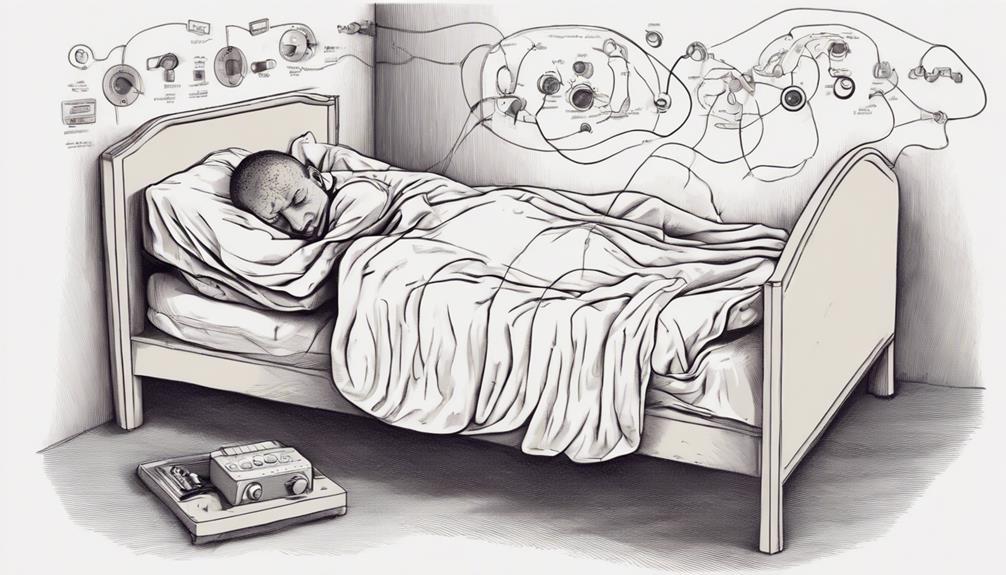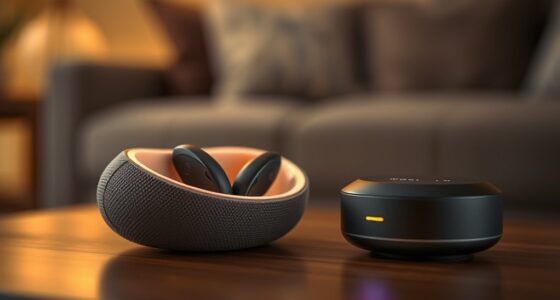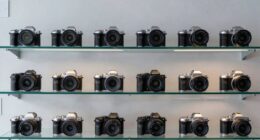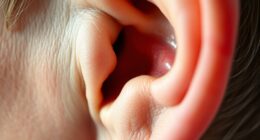Did you know that Assistive Listening Devices (ALDs) can significantly improve how people with Auditory Processing Disorder (APD) understand sounds?
These devices serve as invaluable tools in enhancing speech clarity and reducing background noise, particularly in challenging environments.
By exploring how ALDs such as FM systems, personal amplifiers, infrared systems, and hearing loops work to support individuals with APD, we can gain a deeper understanding of the vital role these devices play in improving communication and daily functioning for those with auditory processing challenges.
Key Takeaways
- ALDs enhance speech clarity and reduce background noise for individuals with Auditory Processing Disorder.
- These devices help in focusing on conversations and understanding speech more effectively.
- ALDs separate speech from surrounding noise, aiding in better comprehension in various environments.
- Properly chosen ALDs are crucial for managing auditory processing challenges and improving listening experiences.
Understanding Auditory Processing Disorder
What exactly is Auditory Processing Disorder (APD) and how does it impact individuals with this condition?
APD is a type of hearing impairment where the auditory processing center in the brain struggles to comprehend sounds despite normal ear function. This disorder can manifest alone or alongside hearing loss, varying in severity among individuals. The brain's adjustment to the lack of sound input contributes to the development of APD.
Symptoms include challenges in listening, speech comprehension, background noise interference, memory of instructions, and sustained focus. Individuals with APD often face learning difficulties due to these factors.
Assistive technology, such as FM systems or personal amplifiers, can aid in overcoming some of the obstacles caused by APD, particularly in environments with excessive background noise. Proper diagnosis by a hearing healthcare professional is crucial to effectively manage APD and improve the quality of life for those affected.
Benefits of Assistive Listening Devices

Individuals with Auditory Processing Disorder (APD) can greatly benefit from utilizing assistive listening devices, as these devices enhance speech clarity and reduce background noise, improving their ability to focus on and understand conversations.
By separating speech from surrounding noise, assistive listening devices play a crucial role in aiding individuals with APD to comprehend spoken information more effectively. The improved sound quality and decreased distractions provided by these devices facilitate better communication in various settings, such as classrooms, social gatherings, and work environments.
These benefits make assistive listening devices a vital strategy in managing auditory processing challenges and enhancing communication skills for individuals with APD. Overall, the ability of these devices to enhance speech clarity and reduce background noise significantly contributes to improving the auditory experiences of individuals with APD, ultimately empowering them to engage more fully in conversations and other auditory tasks.
Types of Assistive Listening Devices
When considering assistive listening devices for auditory processing disorder, it's essential to understand the various types available.
FM systems utilize radio signals to amplify sound, making them suitable for diverse settings like classrooms and theaters.
Infrared systems, on the other hand, employ infrared light to transmit sound, proving beneficial in places like large theaters and courtrooms.
Types of ALDs Explained
Assistive Listening Devices (ALDs) encompass a variety of tools designed to assist individuals with Auditory Processing Disorder (APD), including FM systems, personal amplifiers, infrared systems, hearing loops, and alerting devices.
FM systems utilize radio signals to transmit amplified sounds, suitable for classrooms or lectures.
Personal amplifiers, with built-in directional microphones, are ideal for one-on-one conversations in quieter environments.
Infrared systems deliver sound through infrared light, making them perfect for secure conversations in places like courtrooms.
Hearing loops use electromagnetic energy to offer clear sound directly to hearing aids or cochlear implants, beneficial in theaters or meeting rooms.
Alerting devices, connecting to phones or alarms, signal individuals with APD through sounds or flashing lights, ensuring important alerts are noticed promptly.
Benefits of ALDs
Enhancing speech clarity and reducing background noise, various types of Assistive Listening Devices (ALDs) play a critical role in supporting individuals with Auditory Processing Disorder (APD).
ALDs, such as FM systems and personal amplifiers, offer significant benefits:
- FM Systems: These devices use radio signals to transmit sound directly to the listener, enhancing speech clarity by reducing the impact of background noise.
- Personal Amplifiers: With adjustable volume and noise reduction features, personal amplifiers help individuals with APD focus on the speaker's voice, improving understanding in noisy environments.
- Infrared Systems: By converting audio signals into light signals, infrared systems deliver clear sound to hearing aids, ensuring individuals with APD receive enhanced speech clarity in various settings.
Choosing the Right ALD
How can individuals with Auditory Processing Disorder select the most suitable Assistive Listening Device (ALD) for their unique communication needs?
When considering ALDs, options like low-gain hearing aids, FM systems, personal amplifiers, infrared systems, and hearing loops are available.
Low-gain hearing aids may be suitable for mild cases of APD.
FM systems use radio signals to enhance sound clarity in various settings.
Personal amplifiers, equipped with directional microphones, are ideal for intimate environments.
Infrared systems transmit sound through light signals, beneficial in specific venues like courtrooms.
Hearing loops, utilizing electromagnetic energy, enhance sound for individuals in close proximity to the source.
Understanding the functionality and benefits of each type of ALD is crucial in selecting the most appropriate device for managing Auditory Processing Disorder.
How FM Systems Assist APD

FM systems revolutionize auditory experiences for individuals with Auditory Processing Disorder by efficiently transmitting amplified sounds through radio signals. These systems are crucial in overcoming the challenges posed by background noise and speech clarity for individuals with APD.
Here's how FM systems assist individuals with APD:
- Direct Sound Input: FM systems consist of a microphone, transmitter, and receiver that work together to provide direct sound input to the individual. By bypassing background noise, FM systems ensure that the individual receives clear and amplified sounds, improving speech clarity significantly.
- Enhanced Communication: FM systems are commonly used in various settings like classrooms, restaurants, and theaters where background noise can hinder communication. By enhancing speech perception and understanding, FM systems enable individuals with APD to engage in conversations more effectively and follow instructions with greater ease.
- Improved Daily Activities: The use of FM systems as assistive listening devices offers a practical solution for individuals with APD to navigate daily activities more seamlessly. By reducing auditory processing challenges, FM systems empower individuals with APD to participate more fully in social interactions and educational settings.
Personal Amplifiers for APD
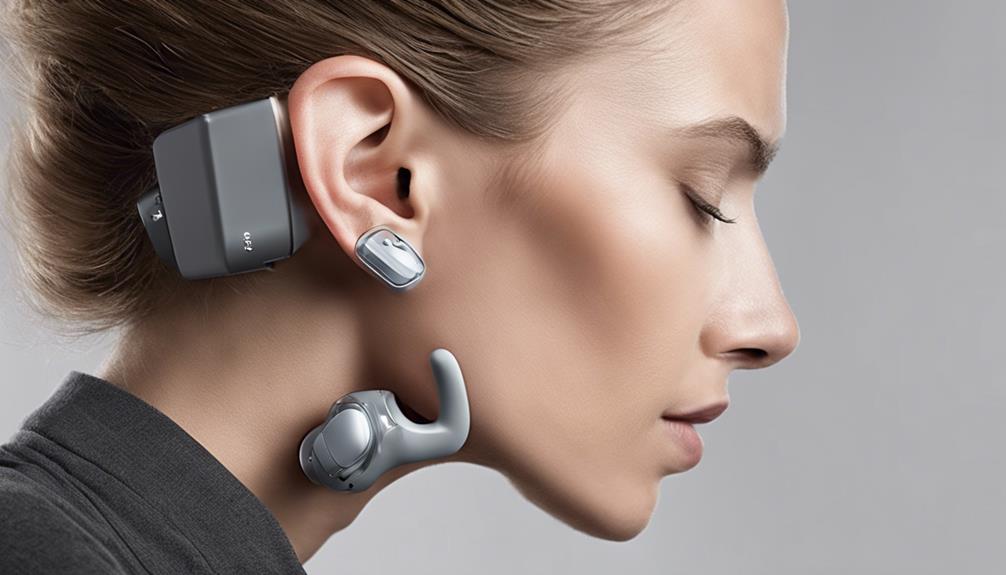
Personal amplifiers for Auditory Processing Disorder (APD) provide individuals with a discreet and user-friendly solution to enhance speech clarity in various settings. These small, portable devices are equipped with built-in directional microphones designed to capture and amplify sound directly to the user while reducing background noise.
Ideal for intimate settings such as one-on-one conversations, classrooms, and small group discussions, personal amplifiers play a crucial role in aiding individuals with APD by improving their ability to understand and process spoken information more effectively. By offering a targeted amplification of the desired sound source, personal amplifiers help mitigate the challenges posed by competing noises, ultimately enhancing speech clarity for the user.
Their convenience and effectiveness make them a valuable tool for individuals with APD who encounter difficulties in scenarios where background noise interferes with communication.
Infrared Systems and APD

In addressing the auditory challenges faced by individuals with Auditory Processing Disorder (APD), the integration of Infrared Systems stands out as a pivotal advancement providing targeted sound transmission in environments like courtrooms and large theaters. These systems offer clear sound by effectively eliminating background noise, which is particularly beneficial for individuals with APD in understanding speech.
The following points highlight the significance of Infrared Systems for individuals with APD:
- Infrared systems transmit sound using infrared light, ensuring that individuals with APD receive a direct and clear audio signal, minimizing distractions from surrounding noise.
- By delivering sound directly to hearing aids, Infrared Systems enhance the clarity of speech and other audio inputs for individuals with APD, aiding in better auditory processing.
- The proximity-based effectiveness of Infrared Systems makes them ideal for settings where individuals with APD struggle to hear clearly, such as large theaters or courtrooms, providing focused sound reinforcement to improve comprehension.
Enhancing Communication With Hearing Loops

Hearing loops utilize electromagnetic technology to transmit sound directly to compatible hearing aids, offering individuals with auditory processing disorder a clear and enhanced auditory experience.
In venues prone to background noise interference, such as theaters or churches, these systems excel in facilitating effective communication.
Hearing Loop Technology
Utilizing electromagnetic energy, hearing loop technology efficiently transmits sound directly to compatible hearing aids, enhancing communication clarity for individuals with auditory processing disorder.
Hearing loops are designed to minimize background noise, ensuring that the speaker's voice is transmitted clearly to the listener. This technology is commonly installed in venues like theaters, churches, and lecture halls to improve the auditory experience for individuals with APD.
Benefits for Users
Enhancing communication with hearing loops involves optimizing speech clarity and minimizing auditory distractions for individuals with Auditory Processing Disorder (APD). Hearing loops utilize electromagnetic energy to transmit sound directly to hearing aids, enhancing speech perception by reducing background noise. This technology is particularly advantageous in environments like theaters and churches, where clear sound signals are crucial for individuals with APD. By providing a direct audio feed, hearing loops help minimize auditory distractions, allowing APD individuals to better engage in conversations and activities. The table below summarizes the key benefits of using hearing loops for individuals with APD:
| Benefits | Description |
|---|---|
| Enhanced Speech Clarity | Direct sound transmission to hearing aids improves speech perception. |
| Reduced Auditory Distractions | Minimizes background noise, enhancing focus on spoken information. |
| Improved Communication | Facilitates better engagement in conversations and activities. |
Improved Listening Experiences
In settings where clear communication is essential, technology that directly transmits sound to hearing aids can significantly enhance the listening experience for individuals with Auditory Processing Disorder (APD).
When utilizing hearing loops, individuals with APD experience improved speech intelligibility due to the system's ability to isolate and amplify crucial speech signals. This enhancement is particularly evident in environments with high levels of background noise, such as theaters or public venues. The electromagnetic energy used by hearing loops creates a direct connection to the telecoil in hearing aids, reducing interference and providing clear and enhanced speech clarity for the user.
Overall, the use of hearing loops plays a crucial role in minimizing distractions and optimizing listening experiences for those with APD.
- Hearing loops directly transmit sound to hearing aids.
- They enhance speech intelligibility in noisy environments.
- The electromagnetic energy creates a direct connection to hearing aids' telecoil.
Frequently Asked Questions
What Are the Assistive Listening Devices for Auditory Processing Disorder?
Assistive listening devices for auditory processing disorder encompass FM systems, personal amplifiers, infrared systems, hearing loops, and alerting devices.
FM systems transmit amplified sounds via radio signals, aiding individuals with APD in various settings.
Personal amplifiers, equipped with directional microphones, enhance speech clarity in intimate environments.
Infrared systems, ideal for large venues like courtrooms, transmit sound through infrared light.
Hearing loops use electromagnetic energy to deliver clear sound to hearing aid wearers in close proximity.
How Do You Support Auditory Processing Disorder?
We support auditory processing disorder through a variety of methods, including the use of assistive listening devices like FM systems and personal amplifiers. These tools aid in processing speech in noisy environments by separating speech from background noise.
Additionally, alerting devices connected to phones and doorbells provide auditory notifications, enhancing awareness of important sounds for individuals with APD. These interventions are crucial for improving communication, learning, and engagement for individuals with APD.
What Is Assistive Technology for Auditory Processing Challenges?
We utilize various assistive technologies for auditory processing challenges. These include personal listening devices, sound field systems, noise-canceling headphones, audio recorders, and captioning tools. These tools are designed to minimize background noise, enhance speech clarity, and facilitate effective auditory information processing.
Personal listening devices with clip-on microphones enhance voice clarity. Sound field systems ensure even voice distribution in challenging acoustic environments. Noise-canceling headphones are beneficial for sound-sensitive individuals. Audio recorders assist in recording and replaying spoken information. Captioning services provide text matching spoken words, aiding in comprehension.
What Are the Benefits of Assistive Listening Devices?
When it comes to assistive listening devices, the benefits are plentiful. These tools enhance speech clarity, separate voices from background noise, and improve understanding of spoken information. They excel in challenging listening environments like classrooms and theaters, helping individuals focus and retain conversations better.
Conclusion
In conclusion, Assistive Listening Devices are essential tools for individuals with Auditory Processing Disorder, improving their ability to process auditory information effectively.
Did you know that studies have shown that using ALDs can improve speech understanding by up to 50% in noisy environments for individuals with APD?
By utilizing FM systems, personal amplifiers, infrared systems, and hearing loops, individuals with APD can experience enhanced communication and increased speech clarity in various settings.


